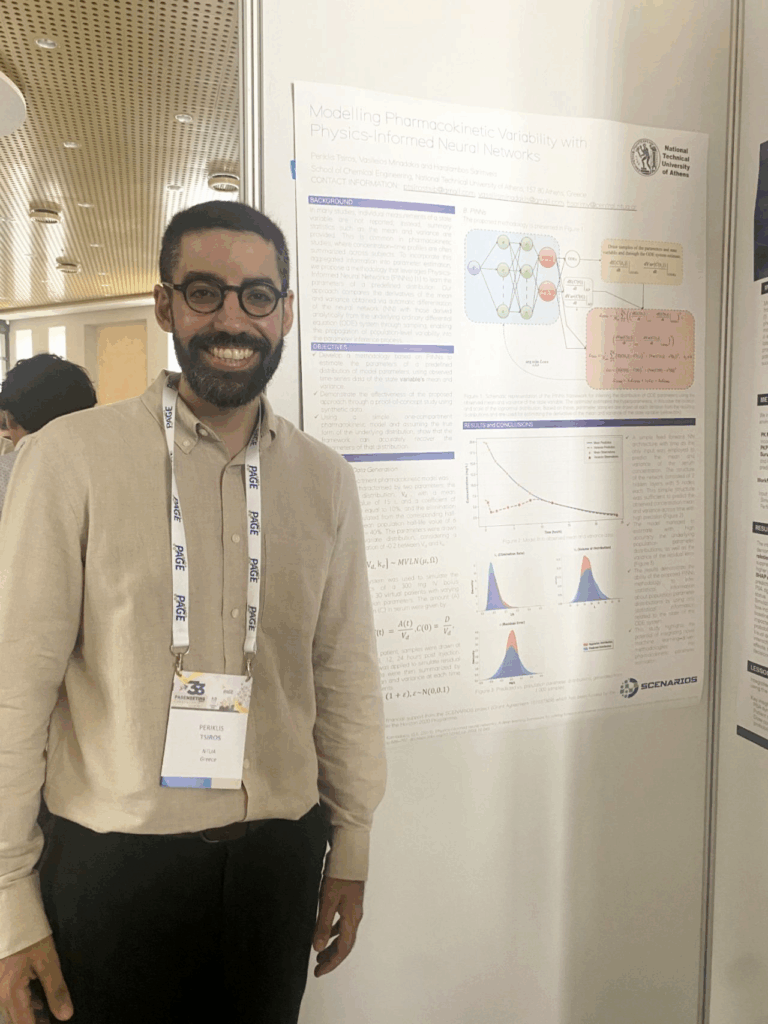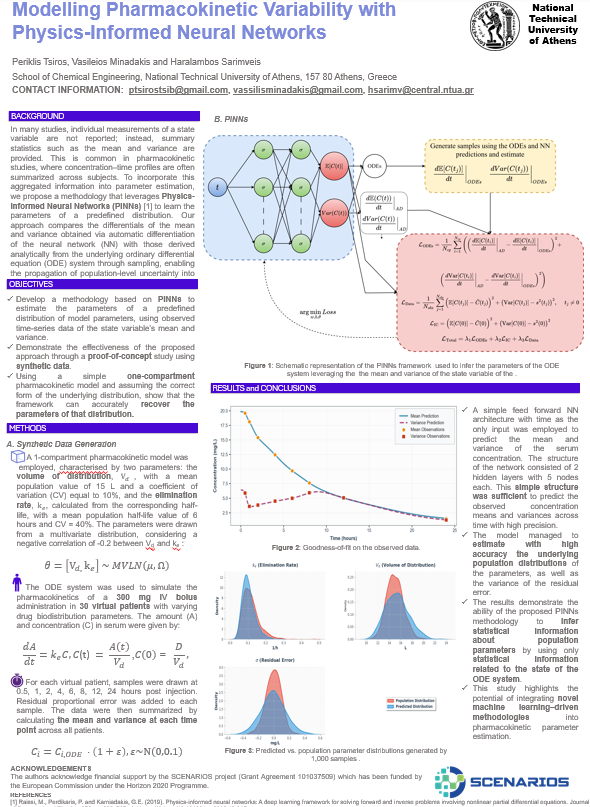On the 5th June in Thessaloniki at the thirty third meeting of the Population Approach Group in Europe Periklis Tsiros presented results from SCENARIOS research to members of the scientific and industry community. Around 800 attended in total, a smaller fraction came to see the poster. The event was related to pharmacokinetics and pharmacodynamics, and Periklis presented a new methodology for estimating pharmacokinetic parameters with variability using physics-informed neural networks.
The annual Population Approach Group in Europe (PAGE) conference was held at the Thessaloniki Concert Hall from 4 to 6 June 2025, bringing together over 800 participants from the pharmaceutical and clinical modeling communities. The meeting is renowned for fostering scientific exchange on pharmacokinetic/pharmacodynamic (PK/PD) modeling and simulation, with a strong emphasis this year on Model-Informed Drug Development (MIDD). Periklis Tsiros from NTUA presented a poster titled “Modelling Pharmacokinetic Variability with Physics-Informed Neural Networks”, which explored innovative applications of physics-informed deep learning in pharmacokinetics.


The presented work introduces a novel methodology for estimating population pharmacokinetic parameters when only summary statistics (e.g., mean and variance) of drug concentration–time profiles are available, which is an often-encountered limitation in published data. By integrating ordinary differential equation (ODE) knowledge into the training of neural networks, the method leverages both mechanistic modeling and data-driven learning to infer parameter distributions. This makes it possible to recover information about variability in kinetic parameters even in the absence of individual-level data.
This approach directly aligns with the goals of the SCENARIOS project, which seeks to advance the toxicological assessment of PFAS by promoting Integrated Approaches to Testing and Assessment (IATA). The method facilitates the use of existing published data to construct robust toxicokinetic models, which can support PFAS hazard characterization through improved modeling of internal exposure. By integrating mechanistic ODE-based modeling with machine learning, the approach offers a promising addition to the computational toolbox for assessing PFAS toxicokinetics, supporting chemical risk assessment.
